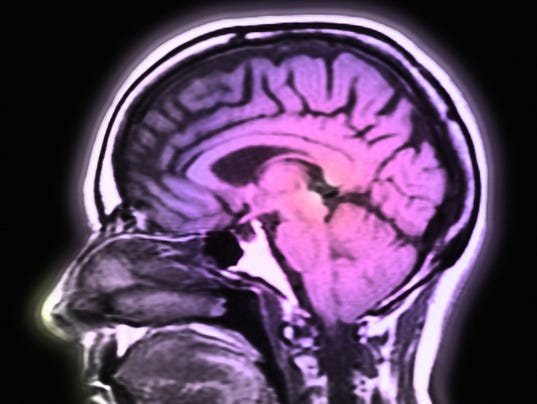
The latest evidence that speaking more than one language is a very good thing for our brains comes from a study finding dementia develops years later in bilingual people than in people who speak just one language.
The study, conducted in India and published Wednesday in the journal Neurology, is not the first to reach this conclusion. But it is the largest and comes with an intriguing new detail: The finding held up even in illiterate people — meaning that the possible effect is not explained by formal education.
Instead, the researchers say, there's something special about switching from one language to another in the course of routine communication — something that helps explain why bilingual people in the study developed dementia five years later than other people did. When illiterate people were compared with other illiterate people, those who could speak more than one language developed dementia six years later.
"We know from other studies that mental activity has a certain protective effect," says co-author Thomas Bak, a neurologist at the University of Edinburgh, Scotland. "Bilingualism combines a lot of different mental activities. You have to switch sounds, concepts, grammatical structures, cultural concepts. It stimulates your brain all the time."
For the study, Bak and colleagues in India reviewed medical records of 648 people with dementia who were seen in a clinic in the city of Hyderabad.
The location was key, because residents of the city, like many people in India, often speak two or three languages — typically some combination of the official language, Telugu, the Urdu dialect Dakkhini and the English increasingly used in schools, workplaces and the media, the authors write. People may speak in one language or combination at home and in neighborhoods and another at work or school, all in the course of a normal day, says co-author Suvarna Alladi, a neurologist at Nizam's Institute of Medical Sciences, Hyderabad.
"Since bilingualism is more of a norm in India, bilingualism is not a characteristic of any particular socioeconomic, geographic or religious group," she says.
More than half of the people diagnosed with dementia at the clinic were bilingual or multilingual. But the researchers found those people had developed their first symptoms, such as memory loss and confusion, at an average age of 65.6 — five years later than the average of 61.1 for people who spoke just one language. The differences were seen in several types of dementia, including Alzheimer's disease, vascular dementia (associated with poor blood flow to the brain) and frontotemporal dementia (caused by degeneration of the brain's frontal or temporal lobes).
Two previous smaller studies, conducted in Ontario, Canada, found a later onset of Alzheimer's disease in bilingual people.
But in those studies, bilingual people were largely immigrants, raising questions about whether they differed in other ways from the general population, says Brian Gold, a neuroscientist at the University of Kentucky, Lexington. The new study is more convincing, he says, "because it is studying bilingual people raised in the same country and culture."
Gold's own lab studies have found that bilingual seniors excel at certain skills, such as quickly sorting colors and shapes, and that their frontal lobes work more efficiently as they perform such tasks.
All the research taken together is more good reason, he says, to expose children to language-learning as they grow — and for bilingual families to keep using more than one language in their homes. It's still unclear, he says, whether people can boost their brains by taking up a second language later in life.
"It may never be too late," Bak says, but he agrees more research is needed. It's also unclear, Bak says, whether bilingual people fare any better than others once symptoms of dementia develop.













